Store of the Future
28th September 2023
WAVE Showcases Food Retail Store Future at RAC Magazine’s Latest Event
WAVE are thrilled to announce our recent participation in the prestigious RAC Magazine in collaboration with Copeland’s event centred around the “Store of the Future.” Held on 27th September, this exceptional gathering explored the indispensable role of refrigeration, air conditioning, heating, and cooling (RACHP) skills in driving holistic efficiency in retail spaces. Among the distinguished speakers at the event, the expertise of Alan Saban from WAVE Ltd was at the forefront.
For those of you that missed the event we will delve into the detail of Alan’s presentation. The presentation highlighted WAVE’s thoughts of how food retail stores of the future could be optimised to help achieve net zero, reduce energy consumption and continue to meet the evolving regulatory landscape.
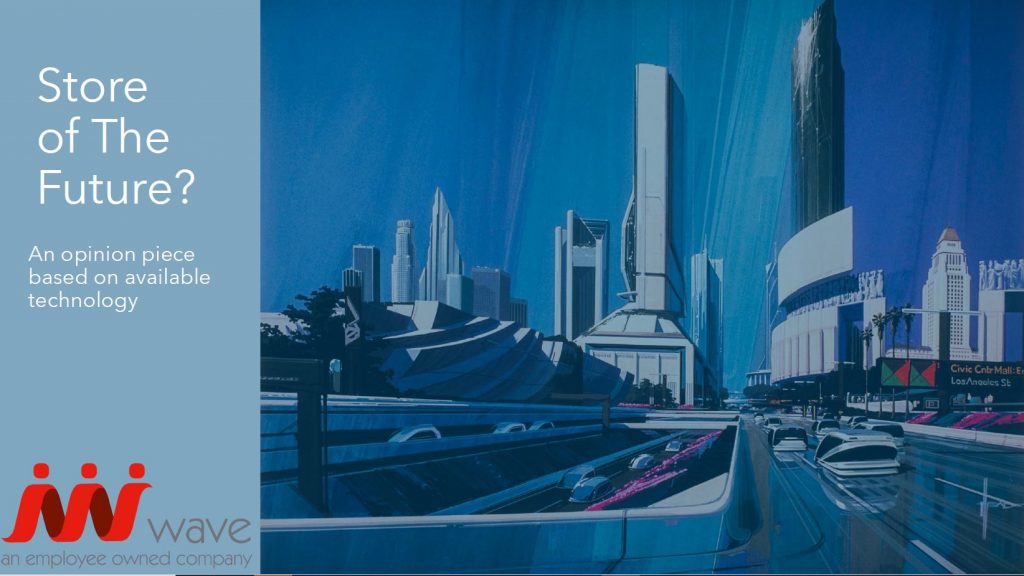
Setting the scene
As Alan begins his presentation, he sets the scene by the UK’s key players and market share of the UK’s food retail market. With a thriving industry that constantly evolves to meet consumer demands, there is a pressing need to address regulatory challenges. By highlighting the complexities of regulations, including the stringent Fgas and PFAS requirements, as well as the ambitious goals of achieving net zero and decarbonizing the national grid. Balancing these obligations with energy efficiency and cost is mind is no small feat, but you also need to acknowledge the influence of both internal and external stakeholders who are further changing buying habits and driving sustainability in business. From the passionate commitment of internal teams to shareholders’ expectations and customer demands, the driving forces behind green and net zero goals are key driving factors influencing future store design.
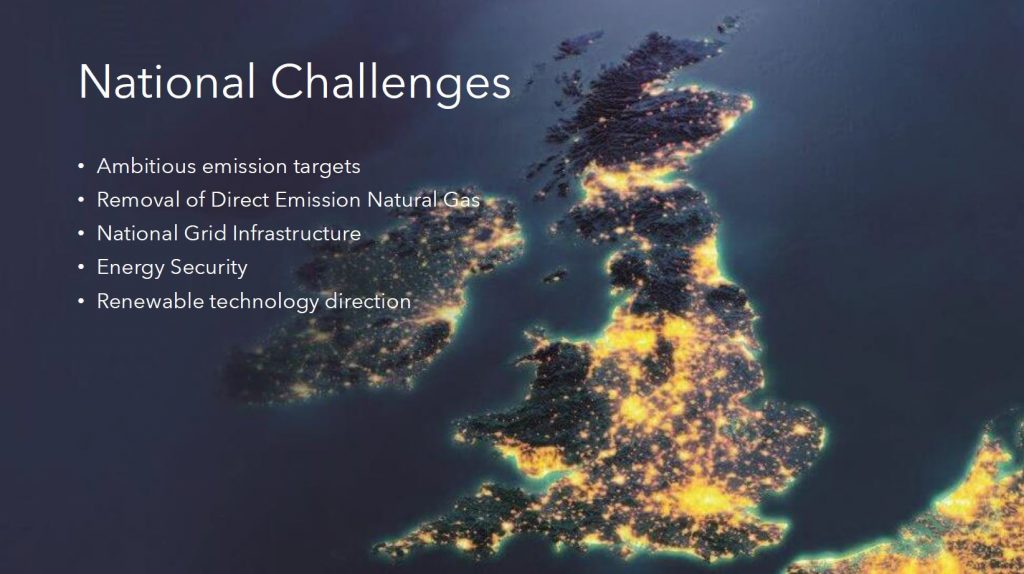
Minimising energy requirements and use
As we delve further into the Store of the Future, the focus seamlessly shifts towards the crucial aspect of minimising energy use and requirements. The implementation of efficient refrigerated cabinets designed with doors, effectively reducing refrigeration loads and minimising energy wastage. Additionally, the adoption of air curtains for cold rooms and store entrances contributes significantly to maintaining optimal temperatures while eliminating unnecessary heat intrusion. Making use of energy-efficient technologies like EC fans ensures an optimized airflow throughout the store, reducing energy consumption. By embracing LED auto-dimming PIR lights, retailers can intelligently adjust lighting levels based on occupancy, significantly reducing energy usage without compromising visibility. Lastly, emphasising the importance of effective maintenance practices, ensuring that all systems continue to operate at high efficiency levels. By adhering to these measures, the Store of the Future will be a beacon of sustainability, ensuring minimized energy usage and a more environmentally conscious approach to food retail.
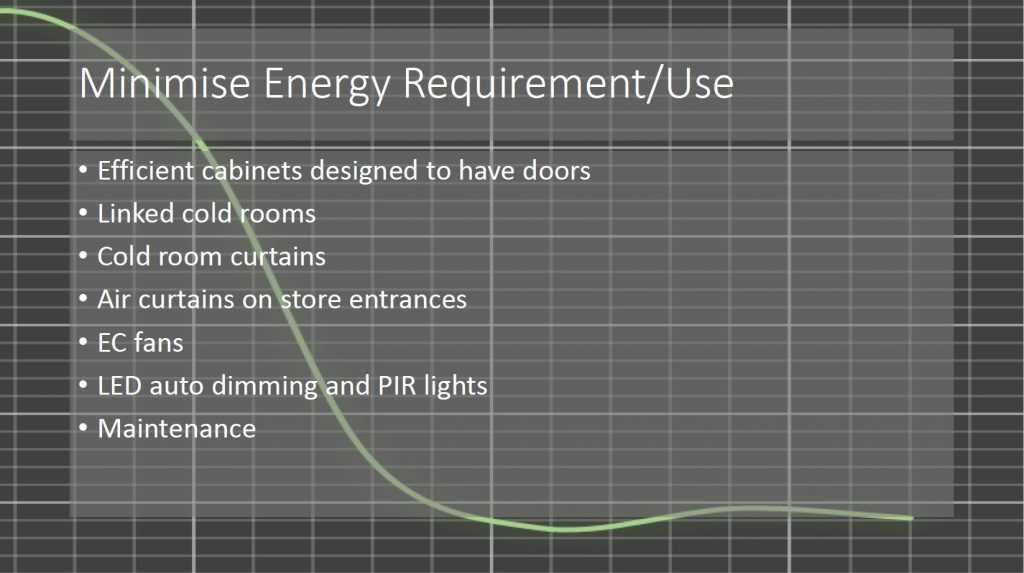
Solar Power and Battery storage
However, to fully optimise store we need to go further than simple energy optimisation in isolation. Next Alan delved into the integration of solar generation and battery storage in food retail, presenting the concept to reduce reliance on the grid and capitalise on energy tariffs. As power requirements increase with the installation of EV charging stations and heat pump systems, upgrading mains supply to stores can pose significant challenges. However, by implementing solar panels and strategically pairing them with battery storage, retailers have the opportunity to generate their own sustainable energy, reducing their dependence on the grid. This integration not only promotes environmental sustainability but also offers the advantage of taking advantage of energy tariffs during off-peak periods. By harnessing renewable energy and storing excess power, food retail stores of the future can effectively manage their energy demands, ensuring a greener and more cost-effective future without straining existing infrastructure.
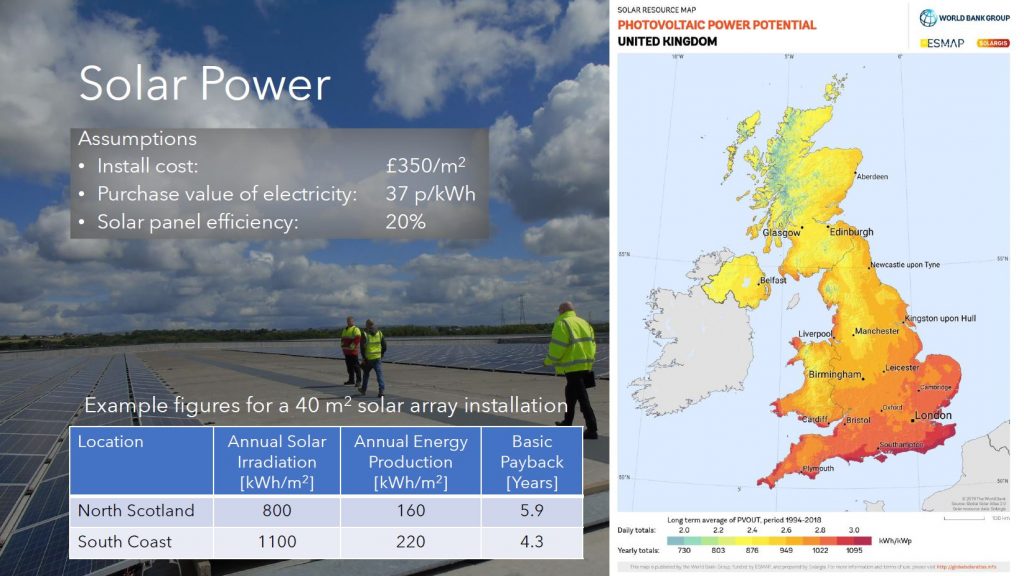
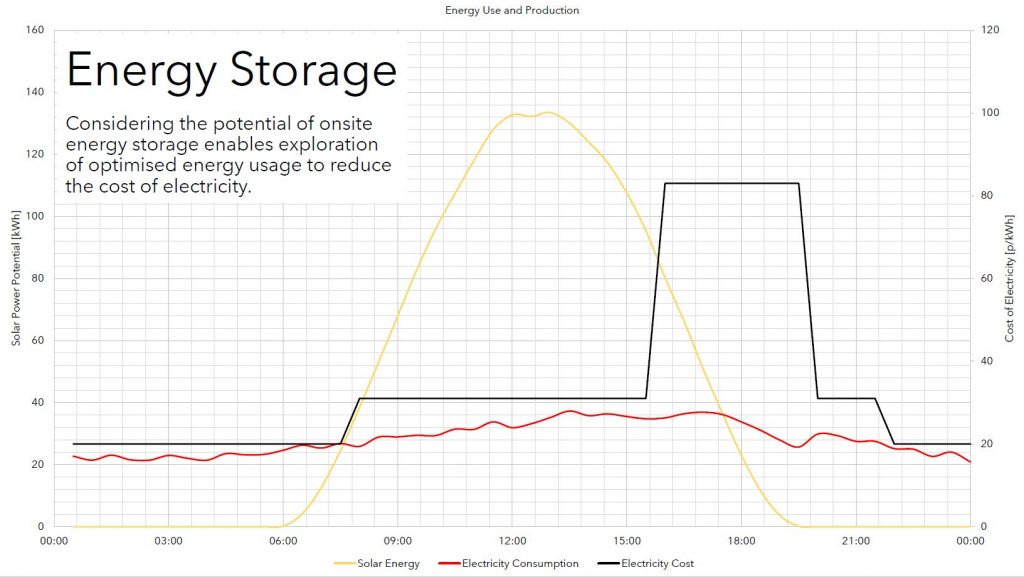
Thermal storage and phase change materials
In the quest for energy efficiency and cost optimization, the integration of phase change materials (PCMs) into building and cold room fabric emerges as a game-changing solution. The presentation next delved into the potential of PCMs to create thermal storage, further leveraging the benefits of energy tariffs. By incorporating PCMs into the fabric of buildings and cold rooms, these innovative materials can store thermal energy during off-peak periods when energy tariffs are lower. Refrigeration systems can effectively “charge” thermal batteries when energy is cheap, then allow the refrigeration systems to be switched off and the thermal batteries “discharged” during periods of peak energy cost. By integrating these into building fabric this can also have a similar effect to help manage heating and energy demand. PCMs absorb and store the excess thermal energy, effectively reducing heating/cooling requirements and minimising the workload on heat transfer systems during peak demand times. This ingenious approach not only ensures better management of energy costs but also decreases reliance on conventional energy sources. By harnessing the power of phase change materials, food retail stores can unlock a new level of efficiency and sustainability, taking advantage of energy tariffs while reducing their carbon footprint.
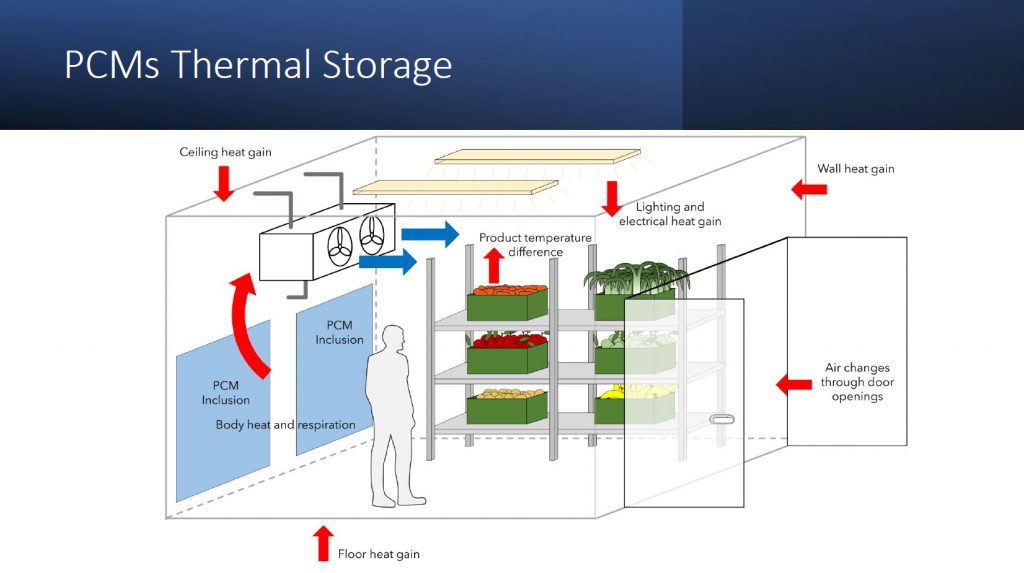
Integrating heating and reducing thermal waste
Finally, the presentation reviewed the integration of heat pumps into food retail stores representing a significant step towards sustainable and efficient operations. In cases where separate gas heating and refrigeration systems exist, transitioning to a heat pump can consolidate these operations, enabling both heating and refrigeration needs to be met by a single system. Additionally, for stores with separate refrigeration systems, incorporating heat pumps allows waste heat from refrigeration to be repurposed for space heating, maximising energy efficiency. Using an integrated solution involves utilising integrated heat pumps, which efficiently generate both heating and cooling, while taking the waste heat from the refrigeration process when available, ultimately reducing reliance on external sources. These examples highlight the versatility and potential of heat pumps in food retail, offering significant energy savings, environmental benefits, and enhanced sustainability for the store of the future. The presentation highlighted a operational expenditure example of these various technologies on a food retail store using weather profiles for Leeds in 2020.
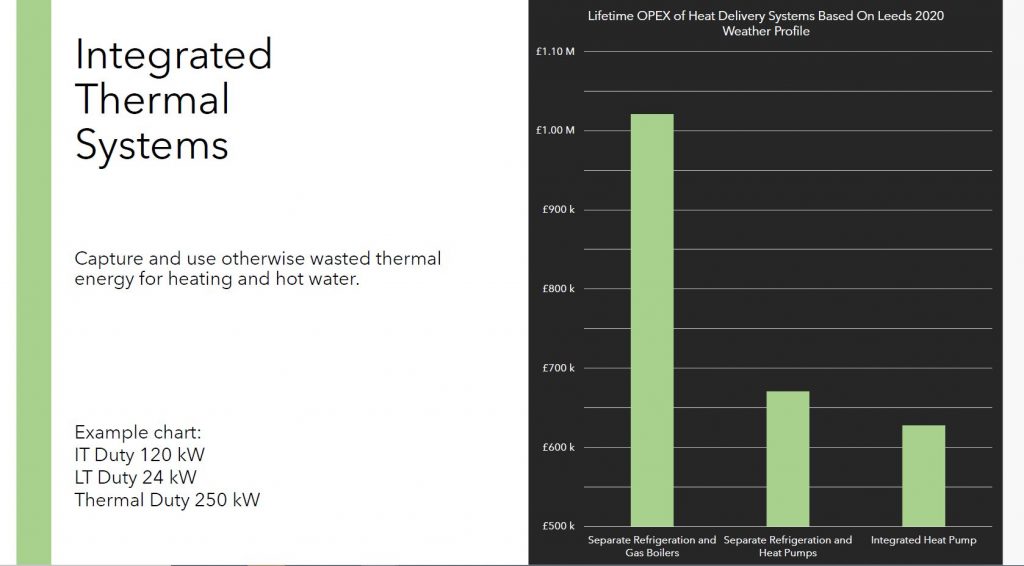
In Conclusion
Alan’s presentation emphasised the crucial importance of integrating building services, implementing effective maintenance practices, and providing necessary training in the evolving landscape of food retail. As the industry continues to advance, increased complexity arises, making seamless integration of various systems ever more essential. By integrating building services, retailers can optimise efficiency across cooling, heating, and refrigeration operations, promoting holistic and sustainable store designs. However, the journey does not end there. Commitment to effective maintenance is imperative to ensure that all systems operate at peak efficiency, avoiding unnecessary energy waste. Simultaneously, investing in training programs equips employees with the skills necessary to adapt to evolving technologies and maintain sustainable practices. The drive to reduce waste energy in any form remains central to achieving a greener future for food retail, and the holistic approach encompassing integration, maintenance, and training is crucial in driving this transformation. training is crucial in driving this transformation.
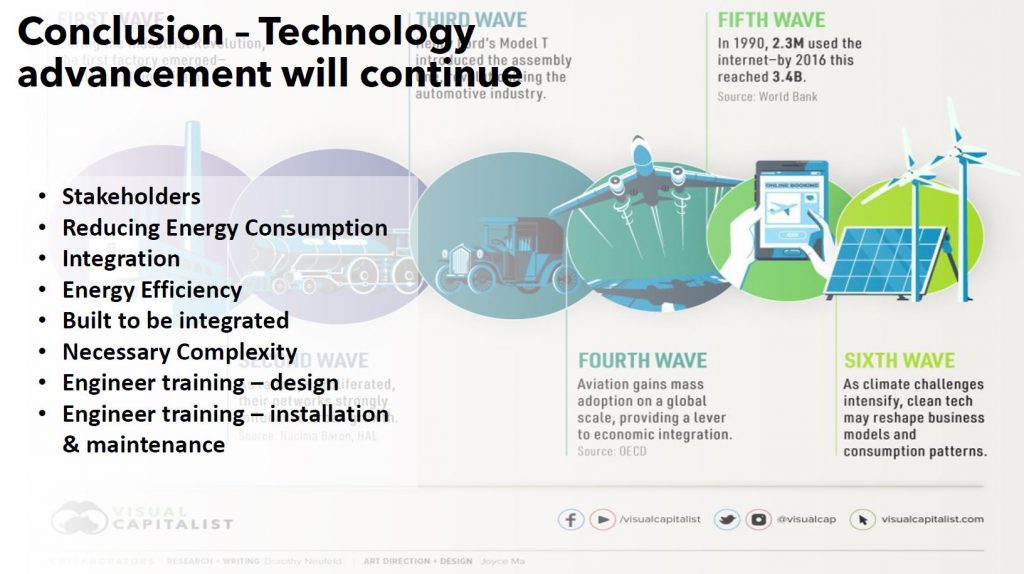
Too see further information on the event stay up to date with RAC Magazine by clicking here and make sure to keep up to date with news on the event from WAVE here.


